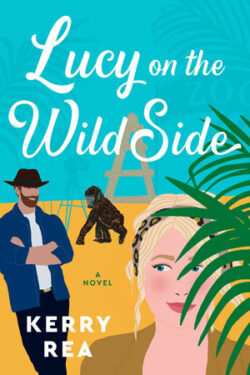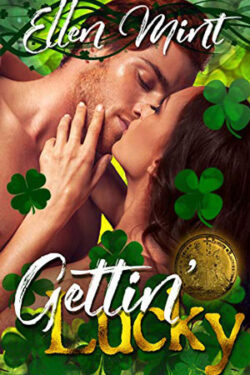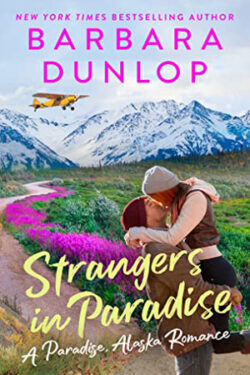Celtic Romance by Cornelia Amiri
Just as some of our fondest memories are of dating and weddings, courtship and betrothal was just as special to the ancient Celts. Love and marriage was so important to the Celts that they had more types of recognized marriages than any other culture. Under the Brehon (Brehoon) laws of
#2. A woman moved to the man’s property and contributed little or nothing financially but managed the housekeeping.
#3. A man moved to the woman’s property and contributed little or nothing financially but managed her cattle and her fields.
#4. The husband and wife both had property and managed their own individually, but the children’s rights were still safeguarded.
#5. By mutual consent the man and woman shared their bodies, but lived under separate roofs. I call that the have your cake and eat it too marriage.
#6. A man abducted the wife of a defeated enemy. So the woman came to that marriage as a spoil of war.
#7. The man and woman got together only for one night of sex. In modern times we have a slang expression for this relationship, we call it a one night stand. The Celts had an expression as well, they called it a soldier’s marriage.
#8. A man seduced a woman by lying to her or by taking advantage of her while she was drunk.
#9. A union by forcible rape.- An ancient story concerns marriage by rape (lánamnas éicne no sláithe, in Irish Brehon Law, and kynnywedi ar liw ac ar oleu, in the Welsh). A priestess of Brigid named Camma was wife of a chieftain named Sinatos. Sinorix murdered Sinatos, then forced the priestess to marry him. Camma put poison in the ceremonial cup from which they both drank. She drank first so he wouldn’t be suspicions. So her vengeance against her husband/rapist was more important to her than her on life. She used the marriage as the means to get vengeance on him. That tell us how the Celitc women really felt about and how they used it.
#10. Both the man and woman were either feeble-minded or insane.The Welsh, under the laws of Hywell (whowell) the Good, they had the same types of marriages as the Irish, except for # 10.
All types of banter must have occurred regarding these marriages. Instead of Yo Mama, they might have said something like, Oh, you must have been born from a number 10 marriage. And they could have more than one spouse, so an ancient Celtic man or woman could have several combinations of marriages. Can you imagine meeting someone and asking not are you married, But what number marriage do you currently have? They might reply, Oh, I have a #1 and a #5 and of course a couple of # 7’s . . . And I thought modern day dating was complicated.
To modern man, it seems silly or even cruel to refer to some of these unions as marriages. But it isn’t, because these marriages were not for the benefit of the man or woman, they were for the protection of the children. By recognizing all these unions as legal marriages, the Celts insured there were no illegitimate children. A child born of any of the 10 unions would inherit like any of their parents other children. Also the land did not go to the eldest son. The estate was split between all children including the daughters, though they didn’t usually inherit land, but if a daughter had no brothers or if her husband had no land of his own, she would inherit land.
Handfasting was another type of Celtic union, it lasted for only a year and a day. Handfasting, predominantly took place at Lughnassadh (LOO-nahs-ah), the Celtic Harvest festival, celebrated August 1. The couple’s wrists were literally tied together during the ceremony. This is where we get the expression “tying the knot” which has come to mean getting married. Single men lined up on one side and unmarried women on the other. They paired off and married for a year and a day. The couple had to return to the same place the following year to make their marriage permanent. They could also end the union the following year at the festival by simply standing back to back, facing north and south, and walking out. Going their separate ways – single once more.
Fruit gathering was also part of Lughnassadh. And this was romantically done as young men and women paired off to pick bilberries and they didn’t return until nightfall. This included the sweet custom of boys threading the bilberries they picked into bracelets for the girls to wear that day.
Another important festival for the ancient Celts was Beltaine (bell-tayn), which in modern times we call May Day. The May Queen led the Beltane procession with her ritual courtship of the Green Man. These symbolic marriages of the god and goddess, in the form of King and Queen of the May, were mirrored in human courtship. One of the most popular May Day traditions was to set a basket full of spring flowers or other small gifts at a neighbor’s house without them seeing you. If you got caught, they would chase, then kiss you. Courtships for the ancient Celts would often begin at Beltaine and the marriages would be held at Samhain (Sah-van), which in modern times we call Halloween.
Samhain, as the beginning of the New Year, was the main season of weddings for the ancient Celts. A tradition that survived in
in Montgomeryshire, was on Samhain they made a mash of nine ingredients: potatoes, carrots, turnips, peas, parsnips, leeks, pepper, salt and new milk. A wedding ring was hidden in the mash. Teenage girls dug into the mash with wooden spoons, anxious to learn their fate, for the one who found the ring would be the first one married. The way it was done in Carmarthenshire, was that on Samhain, nine girls together made a pancake containing nine ingredients, divided it among themselves, and ate it. Before dawn, each girl would have a vision of her future husband. Moving forward, up to the 16th century, we find one of the most interesting Welsh customs, loving spoons. Celtic handmade love spoons were carved from one piece of wood with symbols on the stem, which had various meaning, from two hearts “We love each othe” to an intricate knot meaning “together, forever” A farmer might carve a vine with flowers on the stem which would mean “love grows.” A sailor might carve an anchor which would mean “steadfast love.” The spoon was the main eating utensil of the day, so by giving a lady a spoon the man was also saying I can provide for you, you won’t go hungry. Love spoons were like engagement rings, if the lady accepted the spoon, she accepted the proposed marriage.
Another quaint courtship custom which began in the 16th and 17th century was bundling. On long, dark, cold winter nights, courting couple were encouraged to share a bed – but they were fully clothed and the boy or girl was sewn into a “bundling bag,” a linen sheet that would bind, confine, and conceal the legs, and consequently, private parts of the body. By the late 1600s,
With this romp through the ages, from Brehon marriage laws to bundling, you can get a taste of what courtship and marriage was like for our ancestors. Romance was as important in ancient times as it is today. For as the poets say . . . love is timeless.







I used to be very happy to search out this internet-site.I wished to thanks on your time for this glorious read!! I definitely having fun with every little bit of it and I have you bookmarked to take a look at new stuff you weblog post.
I know this if off topic but I’m looking into starting my own blog and was wondering what all is needed to get set up? I’m assuming having a blog like yours would cost a pretty penny? I’m not very web savvy so I’m not 100% positive. Any tips or advice would be greatly appreciated. Thanks
hello this site of your blog was very interesting for me. But it was difficult to find it with yahoo. Maybe you should improve it with plugins for wordpress like WP seo. 🙂
Cornelia, this was fascinating! Thanks so much for taking the time to share it! And your book sounds really good–it’s going on the list! 🙂
Very interesting information! I knew about the handfasching and am using that in one of my novels when two characters of Celtic heritage get married. I didn’t realize they had a year to find out if they still wanted to be married. Pretty good idea, really. 😉
Calling all sexual unions a marriage is also quite enlightened. I’ll be considering that bit of info for a while.